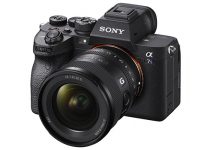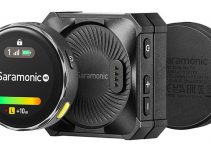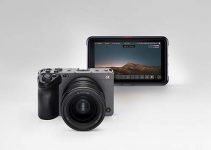DaVinci Resolve 17 (beta) has dropped and with it, Blackmagic has released a host of new features into its #1 post solution that aims to make your life as an editor a little easier. But beyond that cool new Color Warper tool and the usability updates to the Edit and Cut pages, which offer a definite improvement even though they are a little mundane, BlackMagic released something that actually seems magical, the Magic Mask tool.
Masking out any object in a single frame can be time-consuming, but masking out a moving object in a video clip can be a real pain in the hand. You’ll never have the time to do it any real justice, and even if you did the carpal tunnel syndrome in your wrist would be so bad at the end of it that you might never work again.
The wizards at BlackMagic have cooked up a tool that is so ridiculously quick and easy that it would have Lord Voldemort himself questioning his merits among the vile and deadly sorcerers of Knockturn Alley. MrAlexTech gives us a closer look at this amazing new tool in Resolve 17.
Harry Potter references aside, there really is something absolutely mind-blowing about this new feature. The Magic Mask tool allows you to quickly select a person or their individual features and grade them independent from the background of the image. The process is effortless and lightning fast too!
You’ll find this new tool on the Color page, dead center between the blur/sharpen and track/stabilize icons.
Overview
Entering the Magic Mask tool, you’re presented with a Person and Features tab which allows you to either select a subject or isolate their individual features like their head, eyes, torso, etc. On the top right you’ll see a selection tool icon, and an icon to Toggle Mask Overlay. Click both of those, and head on over to your clip.
On your clip, simply draw a little mark on the subject you’d like to isolate and watch the magic happen. In an instant, the subject is highlighted in red, confirming the Magic Mask was able to identify it. From here, you’ll be able to refine that selection using the tools on the right side of the Magic Mask panel. You can smooth out the selection, change the shape, clean up the mask; all of the adjustable parameters are consistent with what you’d expect for chromakeying.
After you’ve made any refinements, you must track the mask along the desired length of the clip by pressing play forward or backward depending on where you started and it will track that object to the end.
Now you can do whatever you want to that node in the color tab and the changes will only affect the subject you selected. You can sharpen them, increase their brightness, do whatever your imagination wants to help them stand out in the scene. You can also invert the mask, and lower the brightness, etc of the background too.
Mask Alpha Output
Another example of how you could use the Magic Mask tool is to quickly cut a subject out to place them onto a new background or insert text or graphic elements behind them.
On the node canvas, right click and select Add Alpha Output. A small box with a blue dot will appear on the right-hand side which will allow you to connect the alpha channel of your Magic Mask node to the clip.
This is done by using your mouse to drag a connect from the node alpha to the right of the node to the output.
Now your subject is punched out from the background. Head back over to the edit page, and replace the background with whatever you desire.
Selecting Individual Features
Just as you previously entered the Magic Mask tool, select Features instead of person and navigate to whatever physical feature you’d like to select. After drawing a line on that feature, the software will isolate it and you can track it as before.
If you want to select additional features in the same node, just toggle down on Features and select the next one you’d like to isolate. That parameter will appear beneath the first, and you can track the simultaneously by pressing the play button.
On top of that, you could create another node and use it to track another person in the image or any other of the Features the software can identify to effect apart from the rest of the frame.
Conclusion
Tricks like these can seem like there really is magic out there. Software shouldn’t be hard to use for video production in 2020, and I like the way things are going in Resolve 17. Now that we’re able to quickly punch out any subject, the creative possibilities are endless. Filmmaking is all about the audience being able to identify the subject or areas of importance in the frame and this tool will make it possible for us to guide their attention further.
Keep in mind, however, that this effect always comes first in the node so any color effects you apply to the image on that node will only apply to the masked portion of the clip, unless you move them to a second node.
Do you have some mind-blowing, fun, or weird examples of effects you’ve done or found that were done with the Magic Mask tool? Post links to them here!
[source: MrAlexTech]
Disclaimer: As an Amazon Associate partner and participant in B&H and Adorama Affiliate programmes, we earn a small comission from each purchase made through the affiliate links listed above at no additional cost to you.




